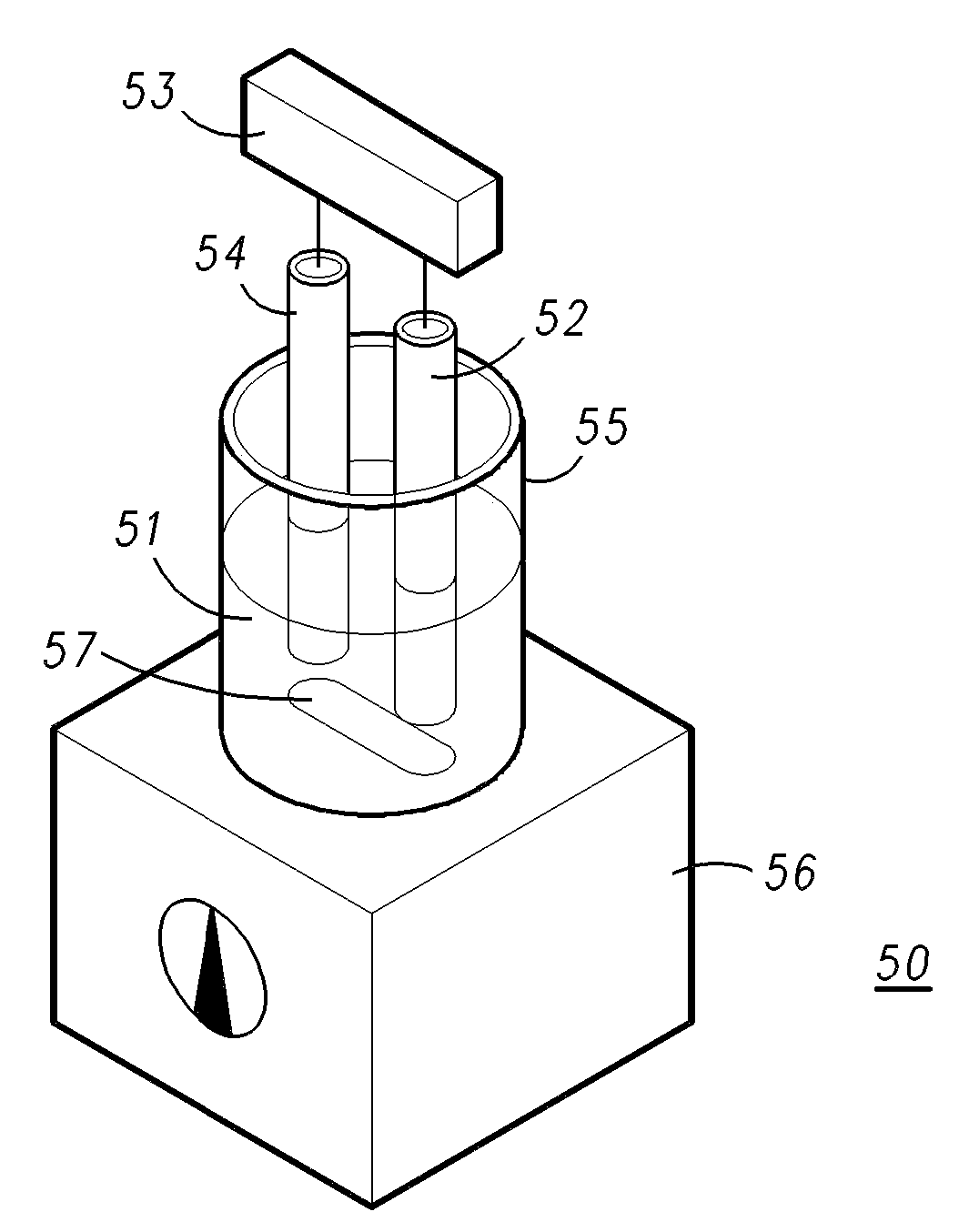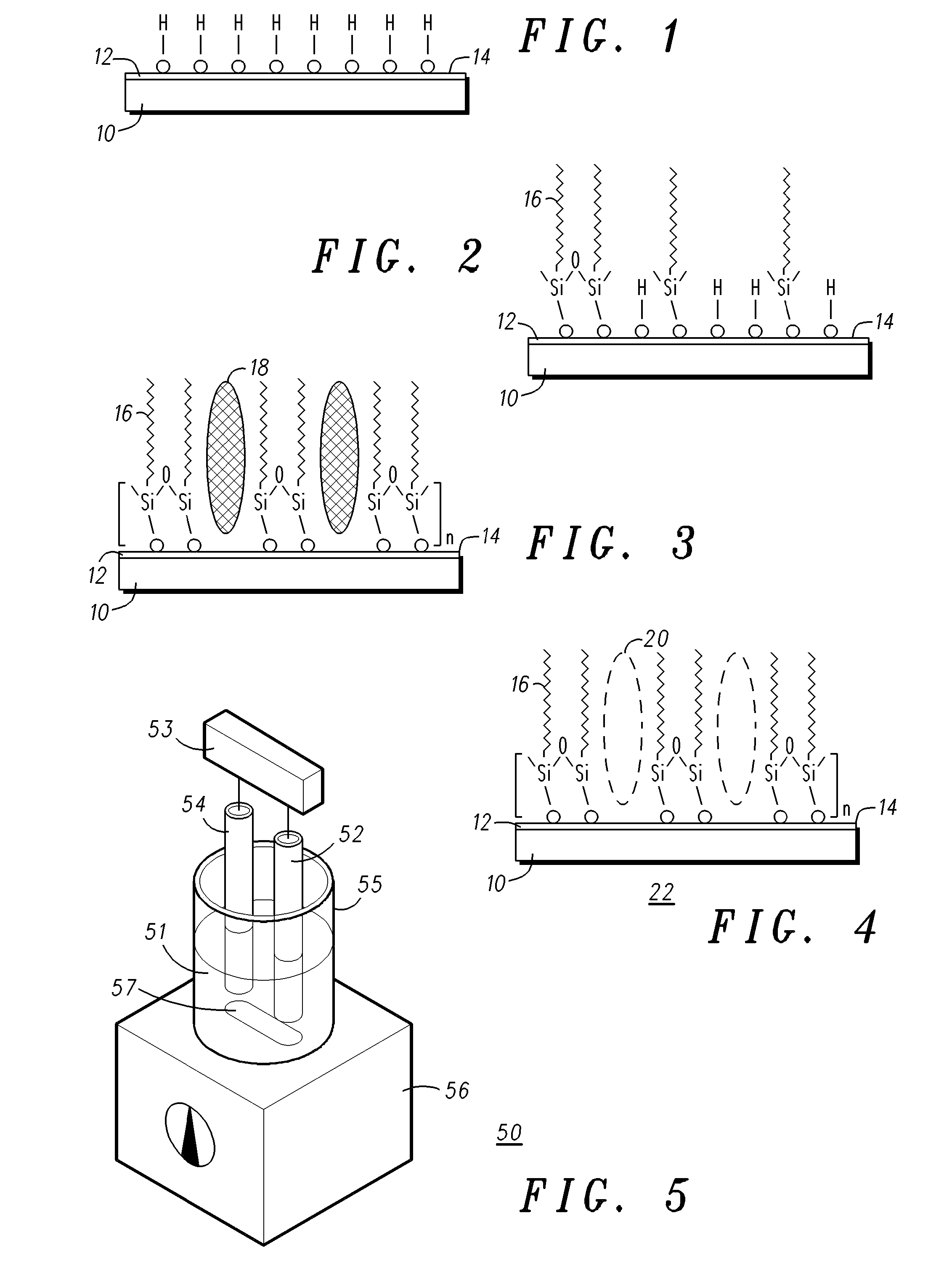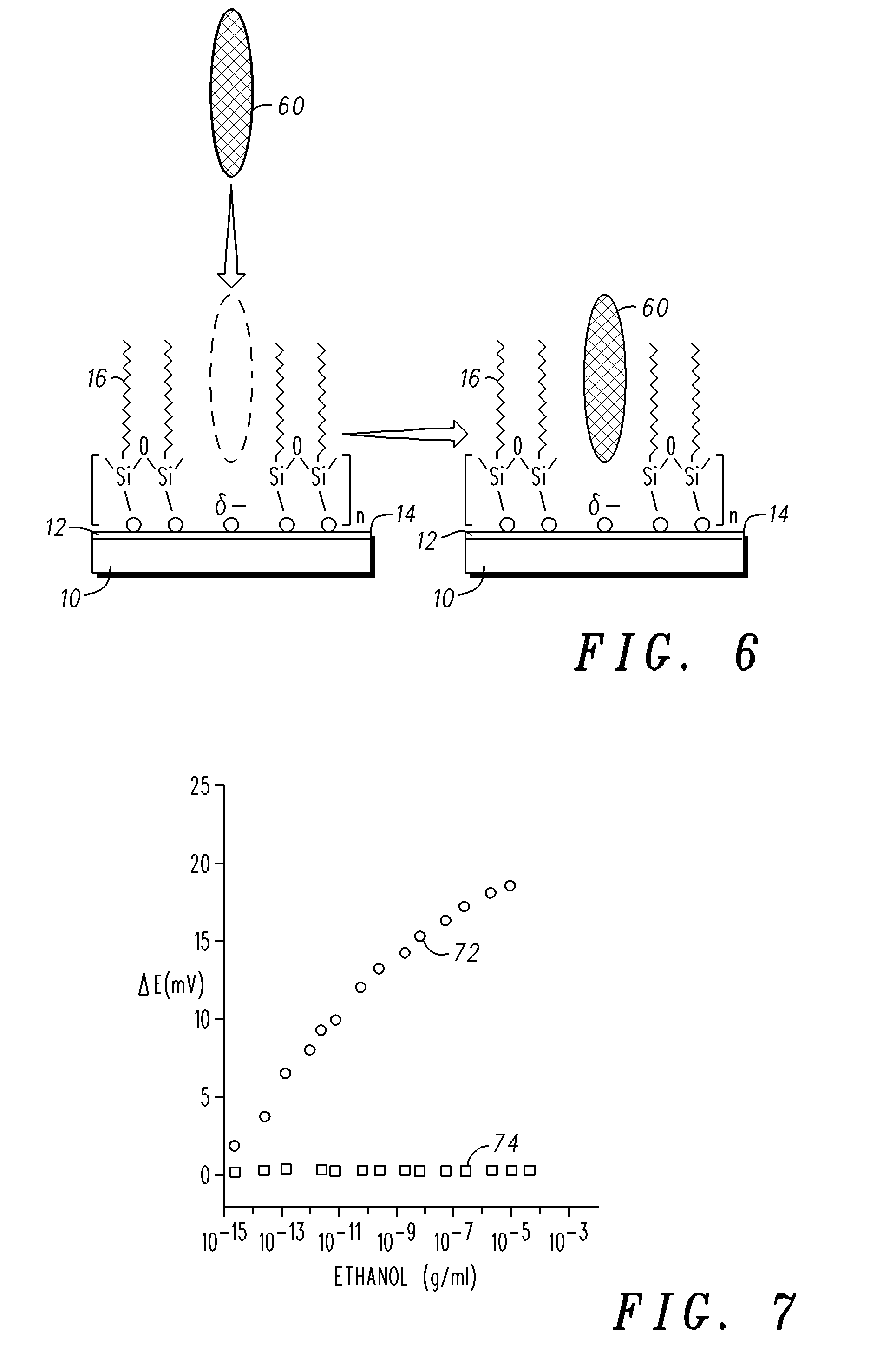Two-step molecular surface imprinting method for making a sensor
- Summary
- Abstract
- Description
- Claims
- Application Information
AI Technical Summary
Benefits of technology
Problems solved by technology
Method used
Image
Examples
Embodiment Construction
[0017]The following detailed description of the invention is merely exemplary in nature and is not intended to limit the invention or the application and uses of the invention. Furthermore, there is no intention to be bound by any theory presented in the preceding background of the invention or the following detailed description of the invention.
[0018]The fabrication of surface-imprinted sensors for the detection of hydroxyl containing molecules, for example, water, ethanol (CH3CH2OH), methanol (CH3OH), propanol (CH3CH2CH2OH), butanol (CH3CH2CH2CH2—OH), isopropanol (OH—H3C—CH3), and a hydroxyl containing molecule comprises a two step process of coating a support surface with a polymer and template molecules. The preferred support surface comprises an indium-tin oxide (ITO)-coated glass electrode, but may comprise other surfaces including electrodes, optic fibers, polymer films, metal, alloys of metal, oxides, glassy carbon, graphite, metal foil, crystals, mica, silicon, semiconducto...
PUM
 Login to View More
Login to View More Abstract
Description
Claims
Application Information
 Login to View More
Login to View More - R&D
- Intellectual Property
- Life Sciences
- Materials
- Tech Scout
- Unparalleled Data Quality
- Higher Quality Content
- 60% Fewer Hallucinations
Browse by: Latest US Patents, China's latest patents, Technical Efficacy Thesaurus, Application Domain, Technology Topic, Popular Technical Reports.
© 2025 PatSnap. All rights reserved.Legal|Privacy policy|Modern Slavery Act Transparency Statement|Sitemap|About US| Contact US: help@patsnap.com



